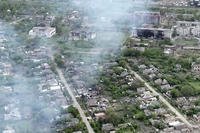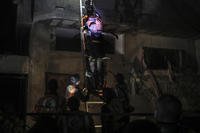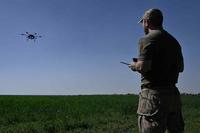 The Air Force does not have a suitable replacement for the planned divestiture of the A-10 Warthog aircraft and U-2 spy plane, senior service leaders said Sept. 16 at the Air Force Association Air and Space Conference, National Harbor, Md.
The Air Force does not have a suitable replacement for the planned divestiture of the A-10 Warthog aircraft and U-2 spy plane, senior service leaders said Sept. 16 at the Air Force Association Air and Space Conference, National Harbor, Md.
“I don’t want to cut the A-10 and the U-2 – we don’t have a replacement,” said Gen. Michael Hostage III, Commander, Air Force Air Combat Command.
As part of its budget request for the fiscal year beginning Oct. 1, the service proposed retiring its entire fleets of A-10 attack planes and U-2 spy planes, and partial inventories of other aircraft. The proposed budget cuts to the A-10 and U-2 fleets are described by service officials as budget-driven necessities given current fiscal pressures.
The recommendations were driven in a large part by automatic budget cuts known as sequestration. Sending the close-air-support aircraft to the bone yard would save an estimated $4.2 billion over five years alone, Air Force officials have said.
“The Air Force leadership is seeking to reshape the force despite decreasing budgets. To mitigate risk we must have the ability to project power. My job is to produce as much combat power as possible. We find ourselves in the difficult position where we are forced to make cuts to legitimate priorities,” Hostage added.
Air Force senior leaders have consistently said that the service needs to retire these platforms in order to save money. The overall costs of the program including life cycle management, sustainment and upkeep have made the A-10 and U-2 budget targets for the service, however many lawmakers have pushed back on the plans.
In fact, in June of this year the House of Representatives approved legislation including a provision that would prohibit the Pentagon from spending any money to retire the fleet of Cold War era-aircraft.
Both the House and Senate Armed Services Committees voted to restore funding to keep the planes flying for at least another year.
Air Force acquisition executive William LaPlante told reporters the service’s budget decision to retire the aircraft was due to an examination of the “part of ISR (intelligence, surveillance, reconnaissance) we could divest with the least amount of risk.”
Regarding the U-2, LaPlante added there is an ever-growing, insatiable appetite for ISR and that the service would look to other assets, such as the Global Hawk, and emerging platforms to help.
When it comes to the A-10, LaPlante said that the emerging F-35A will be capable of picking up a large number of close air support missions currently performed by the A-10.








